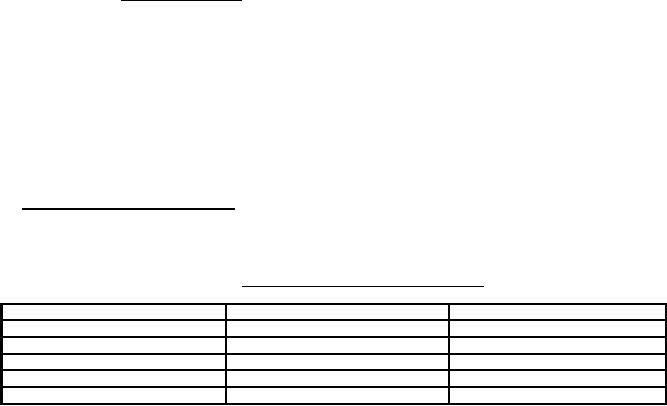 |
|||
|
Page Title:
Table VI. EPA top seventeen hazardous materials |
|
||
| ||||||||||
|
|  MIL-S-4040F
Rated stroke - The linear or angular (as applicable) travel of the armature from the deenergized position to the
energized position.
Compensated actuating voltage - The voltage that will provide at 25C 2C stabilized solenoid temperature a force
equivalent to that produced at maximum rated temperature and minimum rated voltage.
Rated force - The force in pounds a solenoid will produce at the rated stroke and minimum voltage over a specified
temperature range in accordance with the characteristic curve submitted by the manufacturer.
Rated torque - The torque in inch-pounds a solenoid will produce at a rated stroke and minimum voltage over a
specified temperature range in accordance with the characteristic curve submitted by the manufacturer.
Return force - The spring force in pounds available to move the solenoid armature and load to their deenergized
position.
Return torque - The torque in inch-pounds available to return the armature from its energized position.
Net starting torque - The static torque produced by the solenoid within 0 percent to 5 percent of rated stroke when
rated voltage is applied.
Duty cycle - The duty cycle is the ratio of the "on" time to the total time.
Example:
Time on X 100 %
Duty cycle =
Time on + time off
Continuous duty solenoid - A solenoid that is capable of continuous operation without damage, overheating, or
malfunction when operated, with rated voltage applied, for one hour or more at a specified ambient temperature.
Intermittent duty solenoid - A solenoid that is capable of operating at the specified duty cycle without damage or
malfunction with energized periods less than one-half hour.
Direction of rotation (rotary solenoids) - Rotation is defined as clockwise when, facing the armature or power take-off
end of a solenoid, the armature moves in a clockwise direction when the solenoid is energized. When a solenoid is
energized and the armature moves in a counterclockwise direction, the rotation is defined as counterclockwise.
6.7 Environmentally preferable material. Environmentally preferable materials should be used to the maximum
extent possible to meet the requirements of this specification. Table VI lists the Environmental Protection Agency
(EPA) top seventeen hazardous materials targeted for major usage reduction. Use of these materials should be
minimized or eliminated unless needed to meet the requirements specified herein (see Section 3).
Table VI. EPA top seventeen hazardous materials.
Benzene
Dichloromethane
Tetrachloroethylene
Cadmium and Compounds
Lead and Compounds
Toluene
Carbon Tetrachloride
Mercury and Compounds
1,1,1 - Trichoroethane
Chloroform
Methyl Ethyl Ketone
Trichloroethylene
Chromium and Compounds
Methyl Isobutyl Ketone
Xylenes
Cyanide and Compounds
Nickel and Compounds
16
|
|
Privacy Statement - Press Release - Copyright Information. - Contact Us |